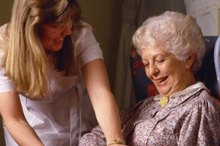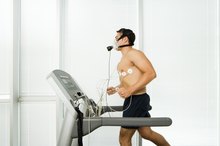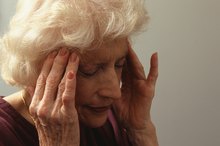Components of a Triage Assessment
Triage is the process by which individuals are assessed for emergency care and how quickly they will receive it 1. In triage, vitals such as blood pressure and temperature are customarily checked and categories are assigned to an individual depending on his condition 1. For example, someone with a category 2 triage might have chest pains, stroke symptoms or second-degree burns 1. The entire process starts with an observation and ends with the decision.
If you are experiencing serious medical symptoms, seek emergency treatment immediately.
Observational Assessment
Also known as the "across-the-room-look," the observational assessment is crucial to determining any necessary initial medical treatment. Upon check-in, the triage nurse makes this assessment based on observation 1. Since triage nurses do not make an official diagnosis but determine how fast a patient gets seen, their initial review of a patient's conditions and symptoms is critical 1. Speed is the most important part of the first component of triage, and a triage nurse must pay particular attention to a patient's breathing, circulation and disability 1.
Triage Assessment
Audit Tools for Nursing Care Plans
Learn More
It is this component, also known as the physical assessment, that can ultimately be the difference in whether someone lives or dies. During the triage assessment, the triage nurse must determine how urgent care is for the patient 1. This is determined by checking and listening for breathing and checking circulation along with other vitals such as blood pressure. Again, though triage nurses do not diagnose, they must be able to assign categories as an error may delay care or result in bad care for the patient 1. During this phase, triage nurses should be attentive to the changes in a patient's condition as care may need to be expedited or slowed 1.
Patient History
To further assess the patient, a triage nurse must conduct an interview 1. The purpose of the interview is to compile a report of the patient's history as it relates to lifestyle habits, family history, and past and present illnesses. Establishing and ensuring the patient's privacy is integral to getting the patient to be comfortable answering questions truthfully. The patient's history is the final assessment needed to make a decision about the patient's triage category, speed of treatment and acuity 1.
Related Articles
References
- Duhaime.org: Triage
- "ACCCN's Critical Care Nursing"; Leanne Aitken, Wendy Chaboyer and Doug Elliott; 2007
- Bazyar J, Farrokhi M, Khankeh H. Triage Systems in Mass Casualty Incidents and Disasters: A Review Study with A Worldwide Approach. Open Access Maced J Med Sci. 2019;7(3):482-494. doi:10.3889/oamjms.2019.119
- Johns Hopkins Medicine. Electronic triage tool improves patient care in emergency departments. September 25, 2017
- Mccoy CE, Chakravarthy B, Lotfipour S. "Guidelines for Field Triage of Injured Patients: In conjunction with the Morbidity and Mortality Weekly Report published by the Center for Disease Control and Prevention." West J Emerg Med. 2013;14(1):69-76. doi:10.5811/westjem.2013.1.15981
- Traub SJ, Butler R, Chang YH, Lipinski C. "Emergency Department Physician Telemedical Triage." Telemed J E Health. 2013;19(11):841-5. doi:10.1089/tmj.2013.0026.
Writer Bio
Leonard Dozier is a freelance writer based in southern New Jersey and New York. His film and sports columns have been published by "Casino Connection Magazine" and Trev Rogers sports respectively. A prolific and extremely versatile writer, he is an ASCAP songwriter and has written screenplays and stage plays registered with the Writer's Guild of America.









